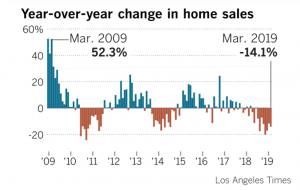
With future employment prospects and ability to view property in limbo buyer confidence continues to shift. According to OJO labs study on Home-buying in the Age of COVID-19, 80% of would-be-buyers have either delayed their housing search or stopped it altogether. The silver lining is with low-interest rates homebuyers can take out a mortgage with more favorable terms and have more buying power. Buyers are still looking through listing photos and going on home tours in preparation for when the market becomes more manageable. Only 20% of buyers interviewed view this time as an opportunity to purchase a home or expedite their home-buying process. Across active and hesitant homebuyers, what has largely been categorized as wants have become needs in the age of COVID-19. Features such as a home office, extra bedrooms (43.5%), open floor plan Open floor plan (45.7%), and kitchen style (50%) have seen a rise in importance as reported by OJO labs.
For would-be buyer’s confidence and sales to return to its pre-pandemic high a lot of responsibility falls on the Realtors. Realtors need to address the new needs and develop a comprehensive mitigation strategy for the spread of COVID-19. Realtors can utilize technological solutions, and other alternative marketing to make prospective buyers comfortable.
Below are a few mitigation strategies the Seymour Group considers effective at curbing COVID-19.
We will continue to update this list as new information surfaces.
Mitigation strategies
- requiring all people involved in a transaction to wear face coverings, consistent with the CDC recommendation to that effect
- declining to show occupied apartments and houses
- asking individuals to view apartments and houses one at a time
- asking individuals to maintain six feet from others and not to touch surfaces
- ensuring that surfaces are cleaned often and thoroughly
- using personal protective coverings
- offering virtual showings of properties
- providing addendum options such as a Sight Unseen Rider or a contingency that the contract is subject to a later in-person visit at a specified later date in time
